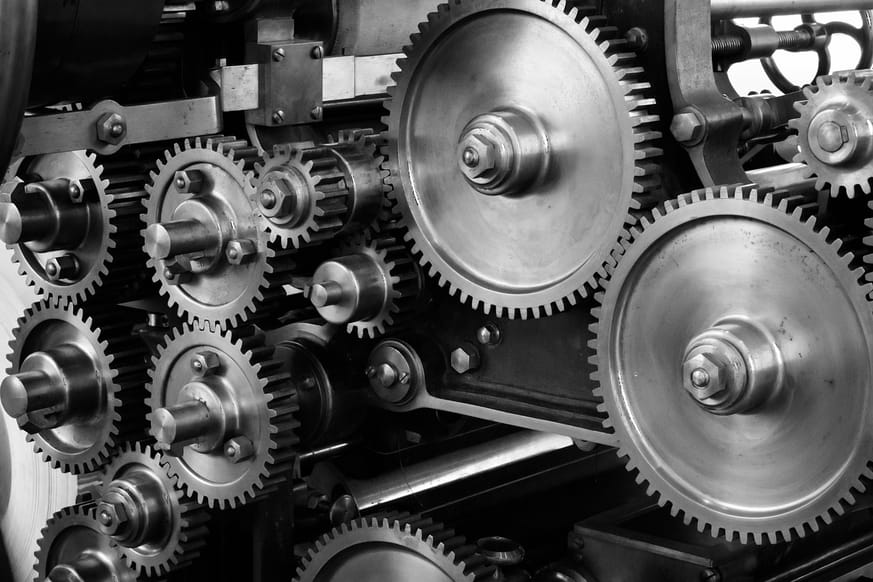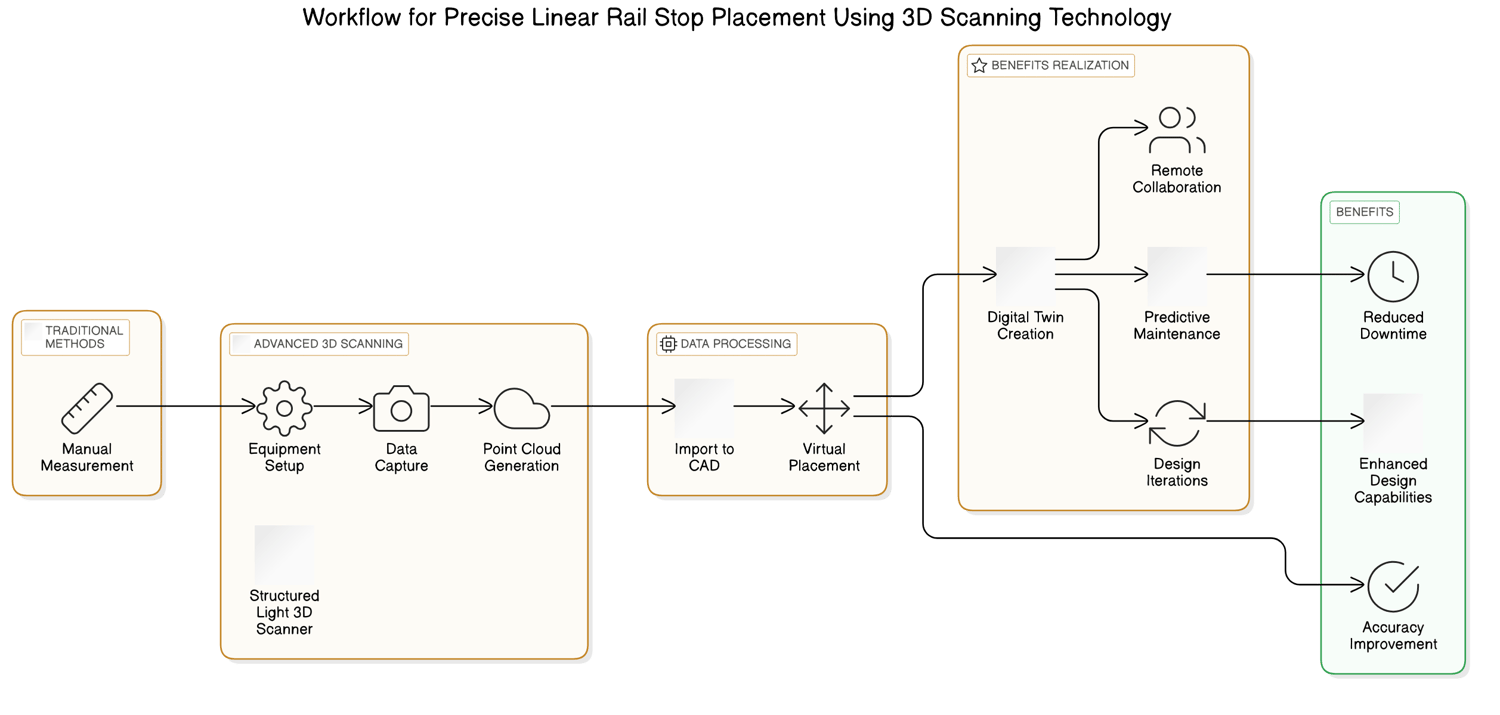Summary
This article explores the critical aspects of selecting the right linear rail stops for precision machinery, highlighting innovations that can boost efficiency and performance. Key Points:
- Customizable linear rail stops with smart sensors enhance predictive maintenance and real-time monitoring, fitting seamlessly into Industry 4.0 systems.
- Advanced materials like ceramic composites and carbon fiber significantly reduce friction and wear, improving longevity and precision in precision machinery.
- Integrated dampening mechanisms are essential for vibration mitigation in high-speed applications, ensuring smooth operation.
Why Choosing the Right Linear Rail Stops Matters for Precision Machinery
A Manufacturer`s Perspective: Real-World Challenges with Linear Rail Stops
- Linear guide systems utilize linear bearings and rails for smooth, precise motion in various machinery applications.
- They provide linear motion by re-circulating rolling elements between a rail and a bearing block.
- The ball trains are designed with a 45° contact angle to evenly distribute load in multiple directions.
- Choosing the right precision bearing can significantly enhance the lifespan of a linear motion system.
- The LM Guide is noted as the first practical application of rolling linear motion parts, offering higher precision than traditional methods.
- Nexen`s technology features a patented rack and roller pinion design along with compact Linear Precision Brakes.
In our everyday lives, we often overlook the intricate mechanisms that make machines work smoothly. Linear guide systems play an essential role in ensuring that everything from factory equipment to train systems operates seamlessly. By using advanced technology like precision bearings and specially designed rails, these systems help in achieving accuracy and longevity in machinery. Understanding these components gives us appreciation for the engineering behind modern conveniences.
Extended Perspectives Comparison:| Type | Load Capacity | Precision Level | Common Applications | Latest Trends |
|---|---|---|---|---|
| Linear Guideways | High (up to several tons) | High Accuracy (±0.01 mm) | Industrial Machinery, CNC Machines | Growing demand for automation and smart manufacturing solutions. |
| Ball Bearings | Moderate (up to hundreds of kg) | Standard Accuracy (±0.05 mm) | Robotics, Conveyors | Increased integration with IoT for predictive maintenance. |
| Roller Bearings | High (up to several tons) | Very High Accuracy (±0.005 mm) | Heavy Machinery, Aerospace Engineering | Development of lightweight materials enhancing performance. |
| Magnetic Linear Motors | Variable depending on design | Ultra-High Precision (< ±0.001 mm) | Automated Assembly Lines, Advanced Robotics | Focus on energy efficiency and reduced friction systems. |
| Linear Motion Systems with Integrated Brakes | Moderate to High depending on system size | Standard to High Accuracy (±0.01 - ±0.1 mm) | Packaging Industry, Material Handling Systems | Integration of safety features and enhanced responsiveness in braking systems. |
Our Approach: Diagnosing Your Precision Machinery Needs
What Types of Linear Rail Stops Exist and When to Use Them?

 Free Images
Free ImagesFrequently Asked Questions About Linear Rail Stops: A Quick Guide
**Q1: What are linear rail stops and why are they important?**
A1: Linear rail stops are essential components that prevent the movement of machinery along a linear guide. They ensure precision by maintaining position and preventing accidents, which is crucial for operational safety and efficiency. ⚙️
**Q2: How do smart sensors enhance the functionality of linear rail stops?**
A2: Smart sensors can provide real-time data on load, impact force, and lifespan. For instance, integrating strain gauges allows operators to monitor conditions actively, leading to timely interventions before issues arise. 📊
**Q3: What benefits does predictive maintenance offer with modern linear rail stops?**
A3: Predictive maintenance minimizes unexpected downtime by scheduling repairs based on data trends. This approach can reduce maintenance costs significantly—sometimes up to 30%—by addressing potential failures before they disrupt operations. 📉
**Q4: Can you give an example of how these systems alert maintenance personnel?**
A4: If a stop records impact forces consistently exceeding a set threshold (e.g., 500 Newtons), it triggers an alert for inspection. This proactive measure helps identify misalignment or wear early, preventing catastrophic failures! 🚨
**Q5: What technology is used for data transmission in modern linear rail systems?**
A5: Data from these advanced systems is often transmitted wirelessly using IoT protocols like LoRaWAN or 5G, allowing seamless integration into existing infrastructure for monitoring and analytics. 🌐
**Q6: How do I choose the right linear rail stop for my needs?**
A6: Consider factors such as load capacity (check specifications in Newtons), application type, and whether you need features like smart sensors or standard mechanical options based on your operational requirements! 🛠️
Understanding Load Capacity and Material Selection for Linear Rail Stops
How Do Different Linear Rail Stop Mechanisms Affect Precision?
Selecting and Installing Linear Rail Stops: A Step-by-Step Guide
In precision machinery, ensuring accuracy and repeatability is paramount. One crucial component that aids in achieving this is the linear rail stop. These stops help control the movement of machinery components along linear rails, providing a reliable point of reference for positioning and operations. This guide will walk you through selecting and installing linear rail stops effectively.
#### Step 1: Assess Your Requirements
Before selecting linear rail stops, evaluate your specific needs:
- **Load Capacity**: Determine the weight your machinery will handle.
- **Travel Distance**: Measure how far you need the machine to move.
- **Precision Level**: Decide on the tolerance level required for your application.
#### Step 2: Select Appropriate Stops
Based on your assessment, choose suitable linear rail stops:
- **Material**: Opt for durable materials such as aluminum or steel, which can withstand wear over time.
- **Type of Stop**: Consider fixed vs. adjustable stops depending on whether you need flexibility in positioning.
- **Compatibility**: Ensure that the selected stops are compatible with your existing rail system (e.g., profile type).
#### Step 3: Gather Required Tools
Before installation, gather necessary tools:
- **Screwdriver Set** (Philips/Flathead)
- **Allen Wrench Set**
- **Caliper or Measuring Tape**
- **Leveling Tool**
#### Step 4: Prepare Installation Site
Ensure that the installation area is clean and free from debris. Double-check that all components of your precision machinery are secured before proceeding.
#### Step 5: Install Linear Rail Stops
Follow these steps to install your chosen linear rail stops:
1. Position the stop at the desired location along the linear rail based on previous measurements.
2. Use a caliper to ensure precise placement relative to other components.
3. Securely fasten each stop using screws provided by the manufacturer; ensure they are tightened according to specified torque settings.
4. After installation, run a preliminary test cycle without load to assess functionality.
#### Advanced Tip:
After successfully installing and testing your linear rail stops, consider marking key positions on both ends of travel with paint or tape for quick visual reference during setup adjustments in future operations.
By following this guide meticulously, you'll enhance not only efficiency but also accuracy within your precision machining processes—ultimately leading to improved product quality and reduced downtime.

Maintaining Optimal Performance: Tips for Extending Linear Rail Stop Lifespan
Conclusion: Optimizing Your Precision Machinery with the Right Linear Rail Stops
Looking ahead, the integration of advanced analytics and AI-driven solutions will likely become standard practice in optimizing machinery operations. This proactive approach not only safeguards against catastrophic failures but also maximizes operational uptime—essential for industries where high-speed precision is paramount.
As you consider your options for linear rail stops, remember that investing in these intelligent systems today will position your operations for success tomorrow. Don’t wait for problems to arise; take action now to explore innovative solutions that will elevate your precision machinery capabilities to new heights!
Reference Articles
Linear Guide Systems
Linear guide systems use linear bearings and rails to ensure smooth and precise motion in machinery across various industries and ...
Linear Guideways
Linear guideways provide linear motion by re-circulating rolling elements between a profiled rail and a bearing block.
High Performance Precision Machinery Parts Linear Guideway ...
High Performance Precision Machinery Parts Linear Guideway and Carriages Product pictures. Specifications Application 1.
MSA Series Heavy Load Type | Linear Guideway
The trains of balls are designed to a contact angle of 45° which enables it to bear an equal load in radial, reversed radial and lateral directions.
Crash Resistance Strategies for Linear Motion Systems
In medium-precision applications, the right precision bearing can solve the greatest threats to a linear motion system's lifetime.
LM Guide|Product Information
The LM Guide is our flagship product, the world's first practical application of rolling linear motion parts. It achieves higher precision ...
Linear Motion Control Products for industrial applications
Nexen's Precision Linear Motion technology offers a high-precision patented rack and roller pinion design and compact and powerful Linear Precision Brakes.
Low assembly Le linear guide series - T-WIN PRECISION
Table stable t-win series linear guide rails and sliders are mainly square rails. The sliders are divided into square and flange type.


 ALL
ALL Precision Machinery
Precision Machinery
Related Discussions